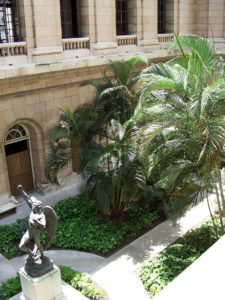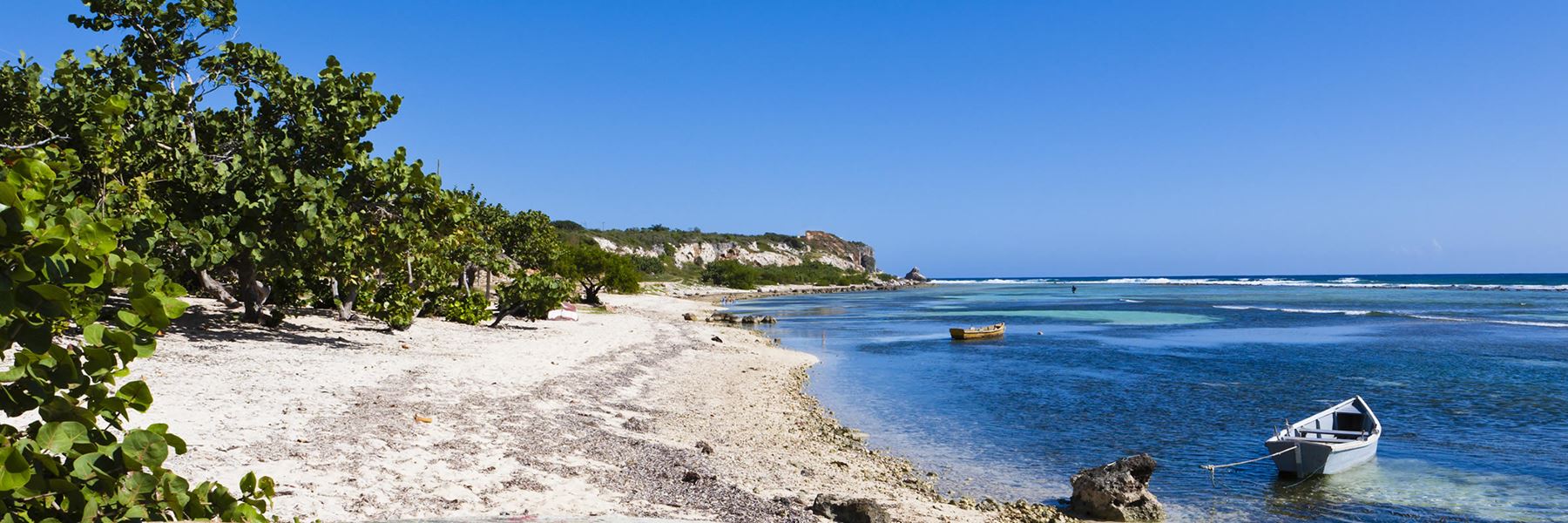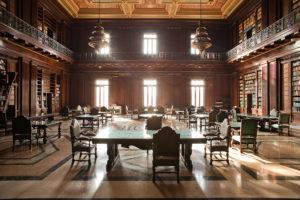 LA HABANA: HISTORIA DEL CAPITOLIO NACIONAL DE CUBA. VIDEO / FOTOS.
LA HABANA: HISTORIA DEL CAPITOLIO NACIONAL DE CUBA. VIDEO / FOTOS.
El Capitolio o el Capitolio Nacional de La Habana es un edificio público y solía ser uno de los sitios más visitados de La Habana, la capital de Cuba. El edificio fue encargado por el presidente cubano Gerardo Machado y se construyó desde 1926 hasta 1929 bajo la dirección de Eugenio Rayneri Piedra. Está ubicado en las calles Paseo del Prado, Dragones, Industria y San José en el centro exacto de La Habana.
El proyecto comenzó en abril de 1926, durante la administración de Gerardo Machado. La construcción fue supervisada por la firma estadounidense Purdy y Henderson. Antes de la Revolución cubana de 1959, el Congreso se alojó en el edificio, el Congreso fue abolido y disuelto después de la Revolución Cubana en 1959 y el edificio quedó en mal estado.
“El Capitolio” tiene un tamaño de 681 por 300 pies. Su diseño, aunque a menudo se compara con el del Capitolio de los Estados Unidos, no es una réplica de él. “Es similar a eso en Washington DC, pero un metro más alto, un metro más ancho y un metro de largo, así como mucho más rico en detalles. Para terminar su construcción, necesitaron más de 5000 trabajadores, 3 años, 3 meses y 20 días, así como aproximadamente 17 millones de dólares americanos “. Terminado en 1929, fue el edificio más alto de La Habana hasta la década de 1950. Alberga la tercera estatua de interior más grande del mundo.
A partir de 2013, el gobierno de Cuba ha estado restaurando lentamente el edificio para su uso una vez más como el hogar de la Asamblea Nacional de Cuba. Las obras se terminaron en 2019.
Edificio
Según su arquitecto, Eugenio Rayneri Piedra, la inspiración para la cúpula provino del Panteón de París a través del Tempietto de Bramante en San Pietro in Montorio. La cúpula, que está revestida de piedra alrededor de un marco de acero que se construyó en los Estados Unidos, se coloca de forma planimétrica hacia adelante en el edificio para permitir el ábside que contiene La República, el “Estatuto de la República”. Con casi 92 m (302 pies) de altura, la cúpula fue el punto más alto en la ciudad de La Habana hasta 1956, cuando se construyó el Edificio FOCSA con una altura de 121 metros (397 pies). El Capitolio tenía la tercera cúpula más alta del mundo en el momento de su construcción.
Los jardines, basados en los diseños de jardines europeos que consisten en áreas de césped bordeadas por senderos y resaltadas por palmeras reales, fueron diseñados por el paisajista francés Jean-Claude Nicolas Forestier, quien también diseñó el Paseo del Prado.
Los 56 escalones que conducen a la entrada principal, La Escalinata, están flanqueados por estatuas de 6,5 m (21 pies) del artista italiano Angelo Zanelli. A la izquierda está el Trabajo (El Trabajo) y a la derecha La Virtud Tutelar (La Virtud Tutelar). Los escalones conducen al pórtico central, que tiene 36 m (118 pies) de ancho y más de 16 m (52 1⁄2 pies) de altura. Hay 12 columnas de granito en el orden jónico dispuestas en dos filas y cada una de más de 14 m (46 pies) de altura. Más allá del pórtico, tres grandes puertas de bronce con bajorrelieves de Zanelli permiten el acceso a la sala principal.
El interior de la sala principal debajo de la cúpula es la Estatua de la República (La Estatua de la República). La estatua, también de Zanelli, fue fundida en bronce en Roma en tres piezas y se reunió dentro del edificio después de su llegada a Cuba. Está cubierta con una hoja de oro de 22 quilates (92%) y pesa 49 toneladas. Con 15 m (49 1⁄4 pies) de altura, era la segunda estatua más alta del mundo en secreto, con solo el Gran Buda de Nara siendo más alto. La estatua se encuentra en un pedestal de 2,5 m (8 1⁄4 pies) de altura, lo que hace que la altura total sea de 17.54 m (57 1⁄2 pies). Lily Valty, una cubana criolla, sirvió como modelo para el cuerpo de Zanelli, y la inspiración para la estatua vino de Atenea, la diosa griega de la sabiduría.
Incrustado en el piso en el centro de la sala principal hay una réplica de diamante de 25 quilates (5 g), que marca el Kilómetro Cero para Cuba. El diamante original, que se dice perteneció al zar Nicolás II de Rusia y fue vendido al estado cubano por un comerciante turco, fue robado el 25 de marzo de 1946 y misteriosamente devuelto al presidente, Ramón Grau San Martín, el 2 de junio de 1946. A ambos lados de la sala principal se encuentra el Salón de Pasos Perdidos, llamado así por sus propiedades acústicas. Estas salas, con pisos de mármol con incrustaciones y lámparas doradas, conducen a las dos cámaras semicirculares que antiguamente albergaban el Parlamento y la Cámara de Diputados. La cámara del Parlamento a la derecha del edificio está respaldada por la oficina del Presidente, que tiene una puerta que se abre directamente al estrado.
Una gama de diferentes lámparas se ve en todo el edificio. Estos fueron diseñados específicamente para la construcción por diseñadores cubanos y la mayoría de ellos fabricados en Francia.
En el centro del edificio hay dos patios que brindan luz y ventilación a las oficinas de las plantas primera (planta baja), tercera y cuarta. El patio norte cuenta con otra estatua, El Ángel Rebelde (El Ángel Rebelde), que fue donada al edificio después de la inauguración. Hay un pequeño quinto piso y un sexto piso que da acceso solo a una parte de la cúpula.
Una amplia escalera de granito de 56 escalones, 36 metros de ancho y 16 metros de altura, conduce al pórtico del edificio. Hay dos filas de 6 columnas de orden jónico. Los pilares destacan con un diámetro de 1,55 metros y una altura de 14,10 metros. Las razones para la sala, ubicadas en todas las puertas y los paneles laterales, son los cuadrados de mármol Boticcino esculpidos por Angelo Zanelli.
A ambos lados del final de la escalera hay dos grupos escultóricos de bronce con pedestal de granito del italiano Angelo Zanelli, uno masculino y otro femenino, tienen una altura de 6,70 metros y representan el primer progreso de la actividad humana y el segundo el tutelar. La virtud de la gente.
Ubicado en el ábside, la Estatua de la República, con un peso de 30 toneladas y una altura total de 14,60 metros, descansa sobre un pedestal de mármol de 2,50 metros. Es la figura de una mujer joven de pie, vestida con una túnica, con casco, escudo y lanza. Fue esculpido por Angelo Zanelli, autor de Altare della Patria, parte del monumento al rey Victor Emmanuel II, en Roma. Es la tercera estatua de interior más grande del mundo, solo superada por el Buda de Nara, Japón y la estatua de Abraham Lincoln en el Lincoln Memorial en Washington.
 LA HAVANA: HISTORY OF THE CUBA’S NATIONAL CAPITOL. VIDEO/ PHOTOS.
LA HAVANA: HISTORY OF THE CUBA’S NATIONAL CAPITOL. VIDEO/ PHOTOS.
El Capitolio or the National Capitol Building (Capitolio Nacional de La Habana) is a public edifice and used to be one of the most visited sites in Havana, capital of Cuba. The building was commissioned by Cuban president Gerardo Machado and built from 1926 to 1929 under the direction of Eugenio Rayneri Piedra. It is located on the Paseo del Prado, Dragones, Industria, and San José streets in the exact center of Havana.
The project began in April 1926, during the Gerardo Machado administration. Construction was overseen by the U.S. firm of Purdy and Henderson. Prior to the Cuban Revolution of 1959, the Congress was housed in the building, the Congress was abolished and disbanded following the Cuban Revolution in 1959 and the building fell into disrepair.
“El Capitolio” has a size of 681 by 300 ft. Its design although it is often compared to that of the United States Capitol, it is not a replica of it. “It is similar to that in Washington D.C, but a meter higher, a meter wider, and a meter long, as well as much richer in detail. To finish its construction they needed more than 5000 workers, 3 years, 3 months and 20 days; as well as approximately 17 millions of American dollars”. Completed in 1929, it was the tallest building in Havana until the 1950s. It houses the world’s third largest indoor statue.
As of 2013, the Government of Cuba has been slowly restoring the building for use once again as the home of Cuba’s National Assembly. Works were finished in 2019.
Building
According to its architect, Eugenio Rayneri Piedra, the inspiration for the cupola came from the Panthéon in Paris by way of Bramante’s Tempietto in San Pietro in Montorio. The cupola, which is stone clad around a steel frame that was constructed in the United States, is set planimetrically forward on the building to allow for the apse that contains La Republica, the “Statute of the Republic”. At almost 92 m (302 ft) high, the dome was the highest point in the city of Havana until 1956 when the FOCSA Building was built reaching a height of 121 meters (397 ft). The Capitolio had the third highest dome in the world at the time of its construction.
The gardens, based on the designs of European gardens consisting of areas of lawn bordered by paths and highlighted by Royal Palm trees, were designed by French landscape architect Jean-Claude Nicolas Forestier who also designed the Paseo del Prado.
The 56 steps leading to the main entrance, La Escalinata, is flanked by 6.5 m (21 ft) statues by the Italian artist Angelo Zanelli. To the left is Work (El Trabajo) and to the right The Tutelary Virtue (La Virtud Tutelar). The steps lead up to the central portico, which is 36 m (118 ft) wide and more than 16 m (52 1⁄2 ft) tall. There are 12 granite columns in the Ionic order arranged in two rows and each over 14 m (46 ft) tall. Beyond the portico, three large bronze doors with bas-reliefs by Zanelli allow access to the main hall.
The inside of the main hall under the cupola is the Statue of the Republic (La Estatua de la República). The statue, also by Zanelli, was cast in bronze in Rome in three pieces and assembled inside the building after its arrival in Cuba. It is covered with 22 carats (92%) gold leaf and weighs 49 tons. At 15 m (49 1⁄4 ft) tall, it was the second highest statue undercover in the world at the time, with only the Great Buddha of Nara being taller. The statue stands on a plinth 2.5 m (8 1⁄4 ft) high bringing the total height to 17.54 m (57 1⁄2 ft). A Creole Cuban, Lily Valty served as the model for the body for Zanelli, and the inspiration for the statue came from Athena, the Greek goddess of wisdom.
Embedded in the floor in the center of the main hall is a replica 25 carat (5 g) diamond, which marks Kilometre Zero for Cuba. The original diamond, said to have belonged to Tsar Nicholas II of Russia and have been sold to the Cuban state by a Turkish merchant, was stolen on 25 March 1946 and mysteriously returned to the President, Ramón Grau San Martín, on 2 June 1946. To either side of the main hall is the Salón de Pasos Perdidos (Hall of Lost Steps), named for its acoustic properties. These halls, with inlaid marble floors and gilded lamps, lead to the two semicircular chambers that formerly housed the Parliament and Chamber of Deputies. The Parliament chamber to the right of the building is backed on to by the President’s office which has a door opening directly onto the dais.
A range of different lamps is seen throughout the building. These were all designed specifically for the building by Cuban designers and the majority of them manufactured in France.
In the center of the building are two patios which provide light and ventilation for the offices of first (ground), third and fourth floors. The north patio features another statue The Rebellious Angel (El Ángel Rebelde) which was donated to the building after the inauguration. There are a small fifth floor and a sixth floor which gives access only to part of the cupola.
A wide granite staircase of 56 steps, 36 meters wide and 16 meters high, leads to the portico of the building. There are two rows of 6 columns of the Ionic order. The pillars stand out with a diameter of 1.55 meters and a height of 14.10 meters. Reasons for the hall, located in all the doors and the lateral panels, are the Boticcino marble squares sculpted by Angelo Zanelli.
On both sides of the end of the staircase are two bronze sculptural groups with granite pedestal by the Italian Angelo Zanelli, one male, and the other female, have a height of 6.70 meters and represent the first progress of human activity and the second the tutelary virtue of the people.
Statue of the Republic
Located in the apse, the Statue of the Republic, with a weight of 30 tons and a total height of 14.60 meters, rests on a marble pedestal of 2.50 meters. It is the figure of a young woman standing, dressed in a tunic, with a helmet, shield, and lance. It was sculpted by Angelo Zanelli, author of the Altare della Patria, part of the monument to King Victor Emmanuel II, in Rome. It is the third largest indoor statue in the world, surpassed only by the Buddha of Nara, Japan and the Abraham Lincoln statue in the Lincoln Memorial in Washington. D.C.
Agencies/ WikiPedia/ Internet Photos/ YouTube/ Arnoldo Varona/ www.TheCubanHistory.com
THE CUBAN HISTORY, HOLLYWOOD.



 < LA HAVANA: History of the Cuba's National Capitol. Video/ Photos.
< LA HAVANA: History of the Cuba's National Capitol. Video/ Photos.








